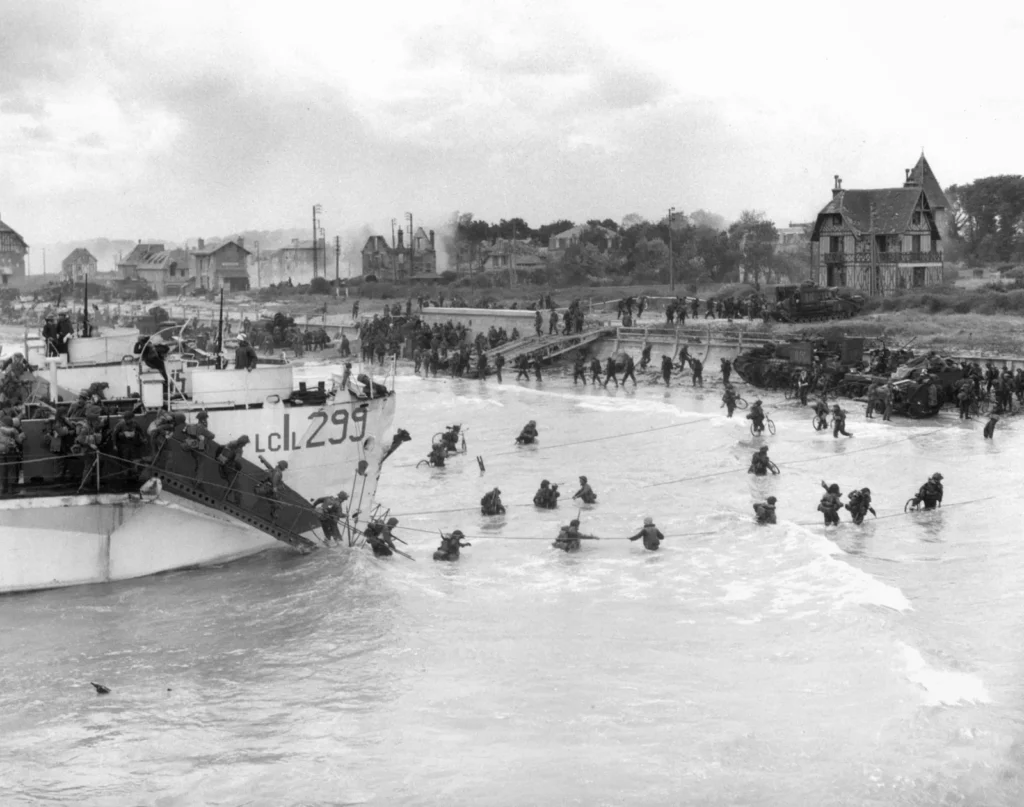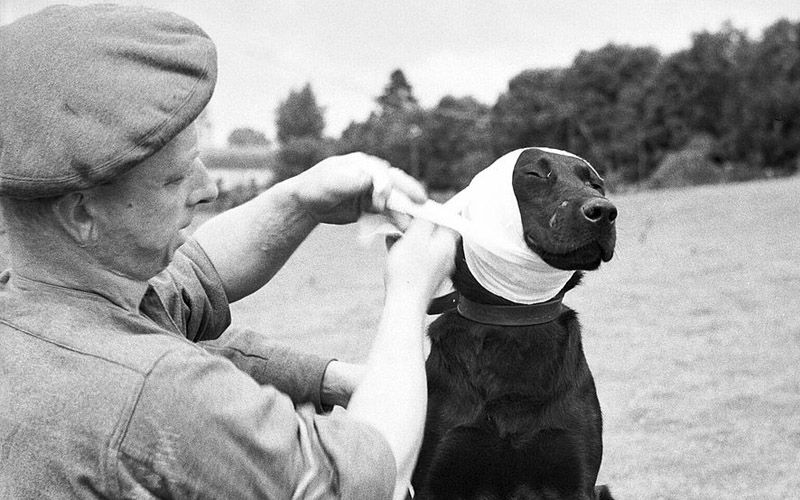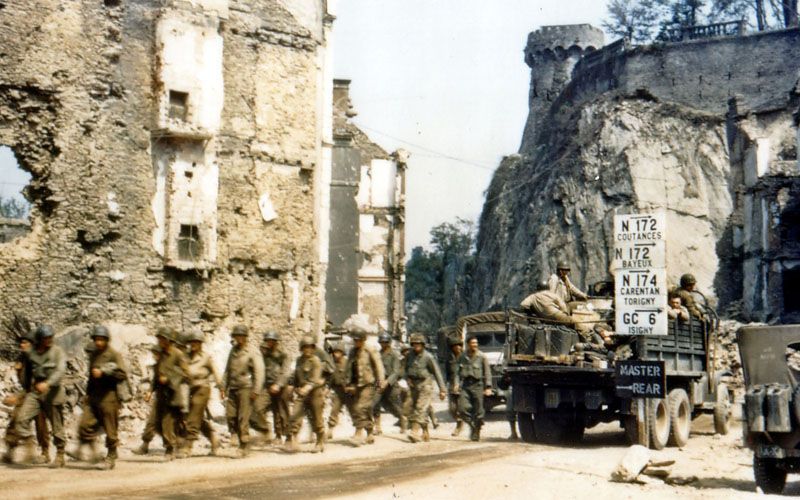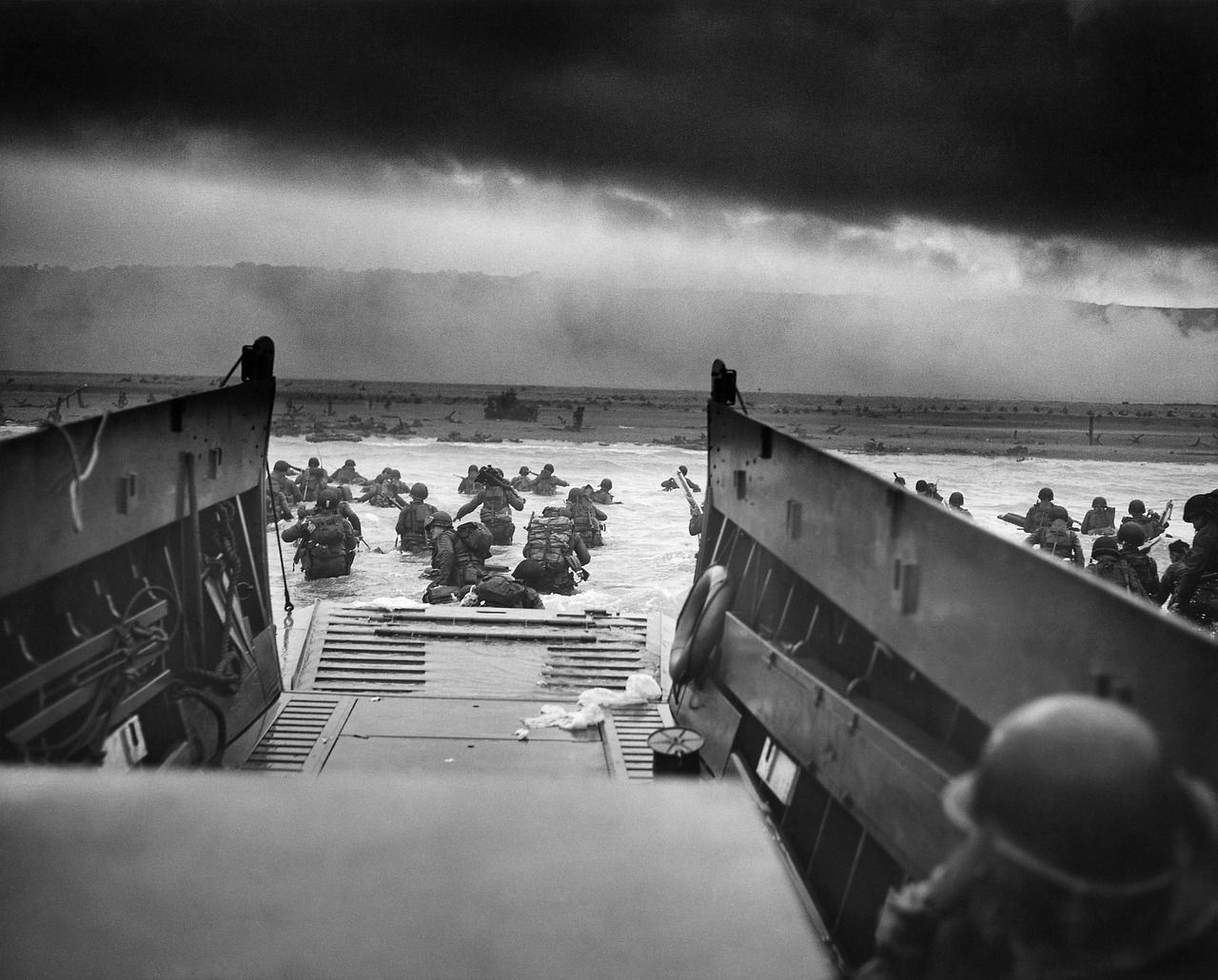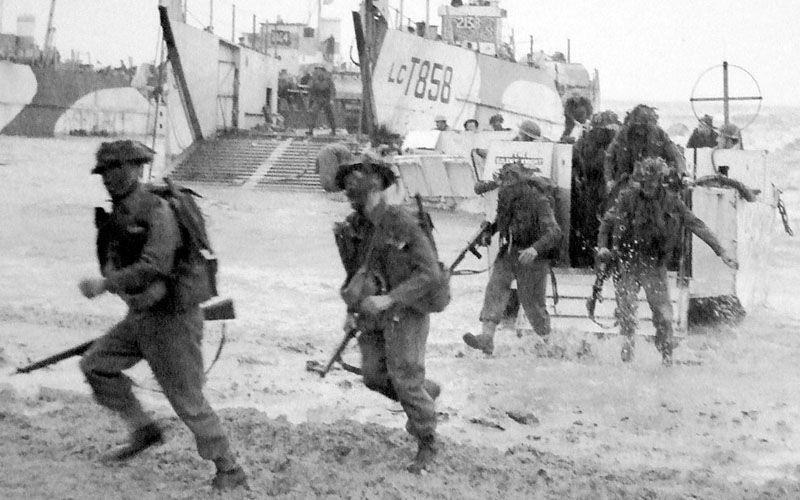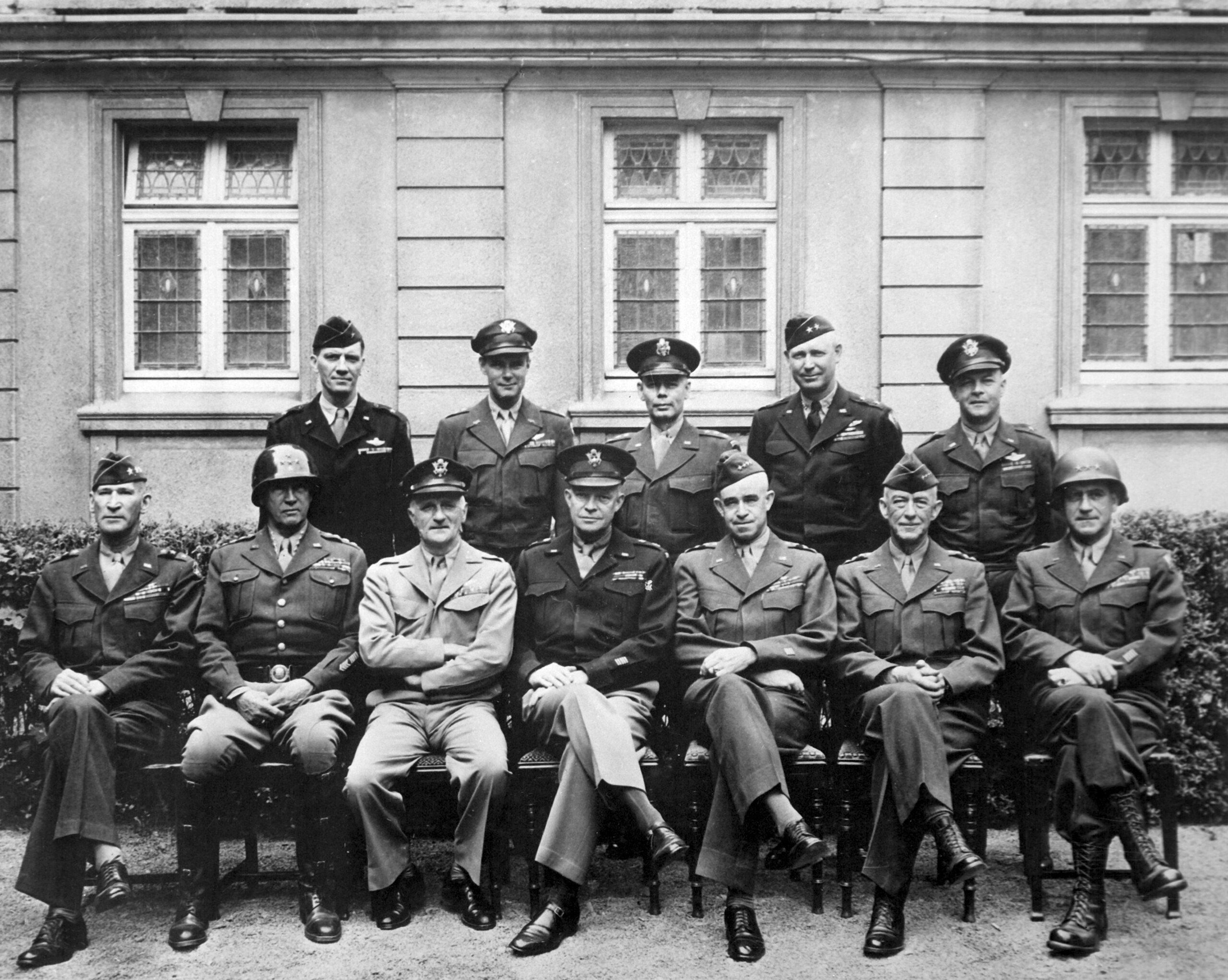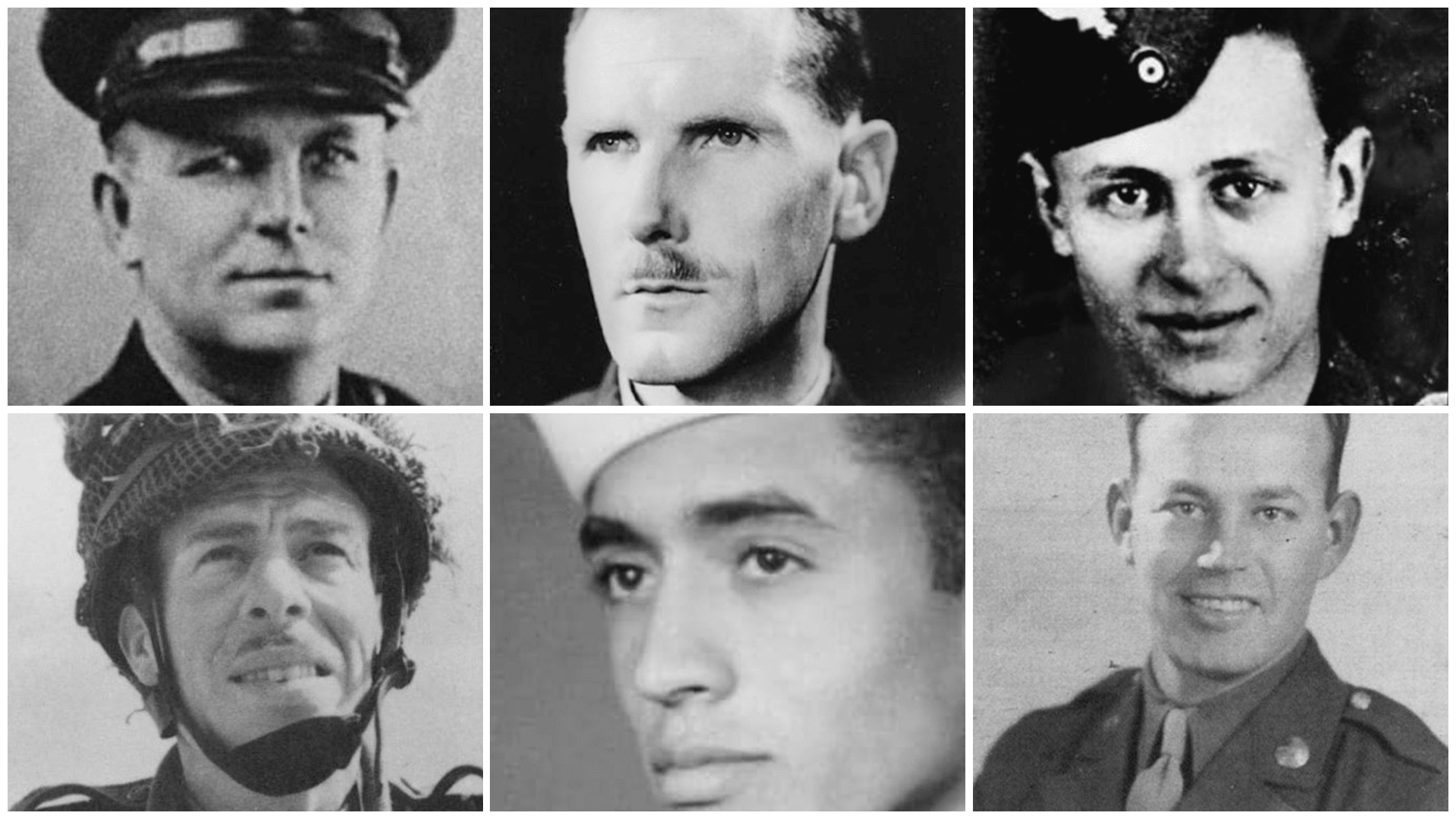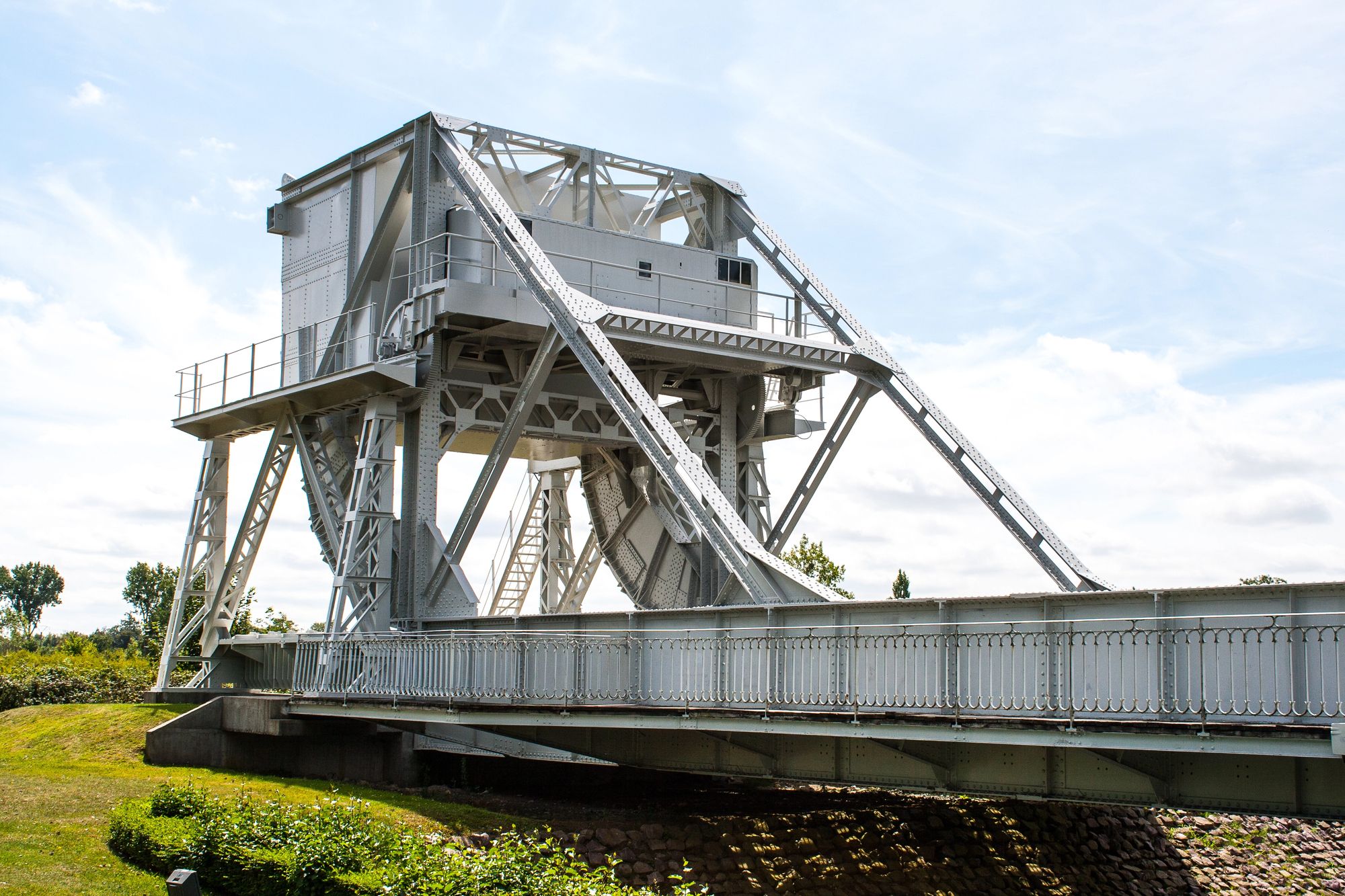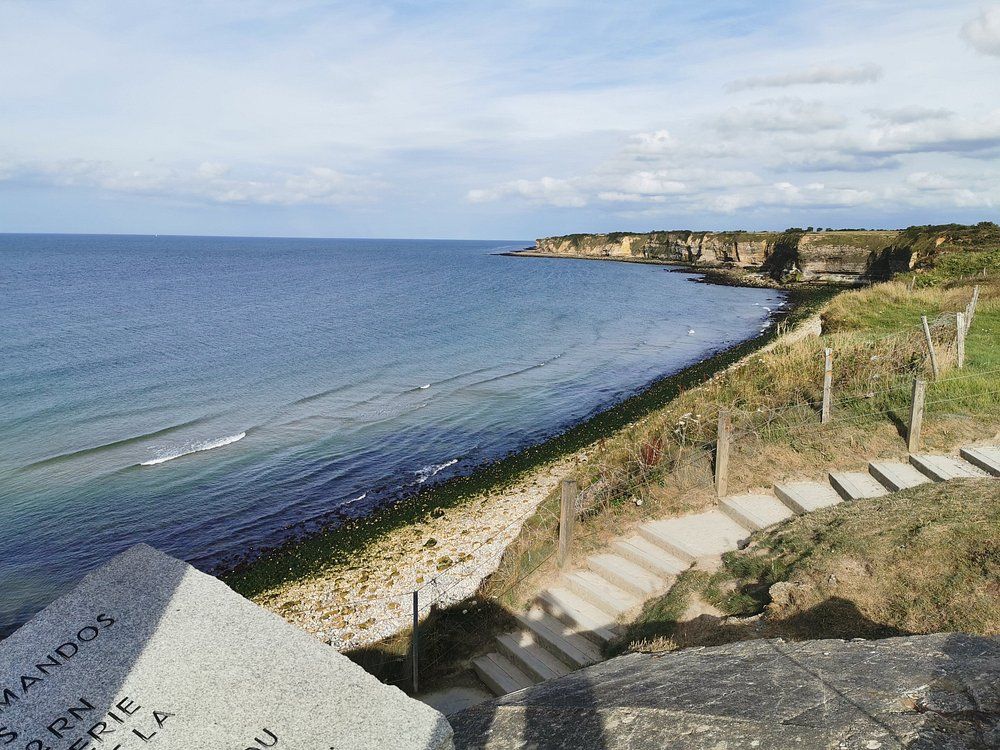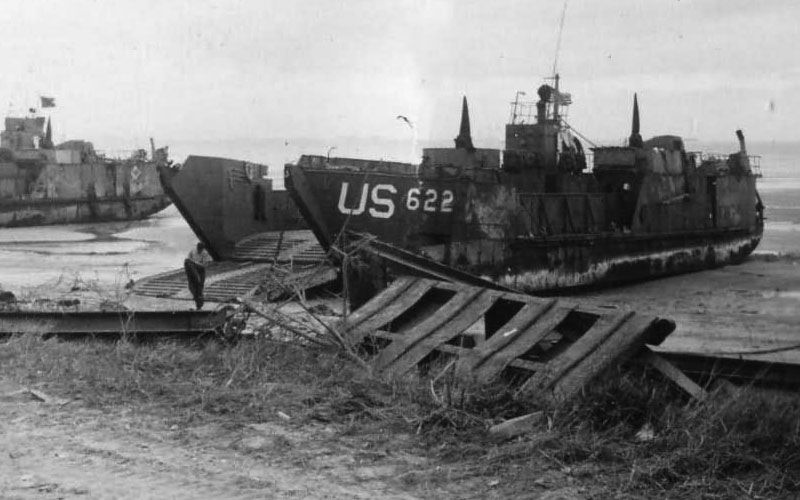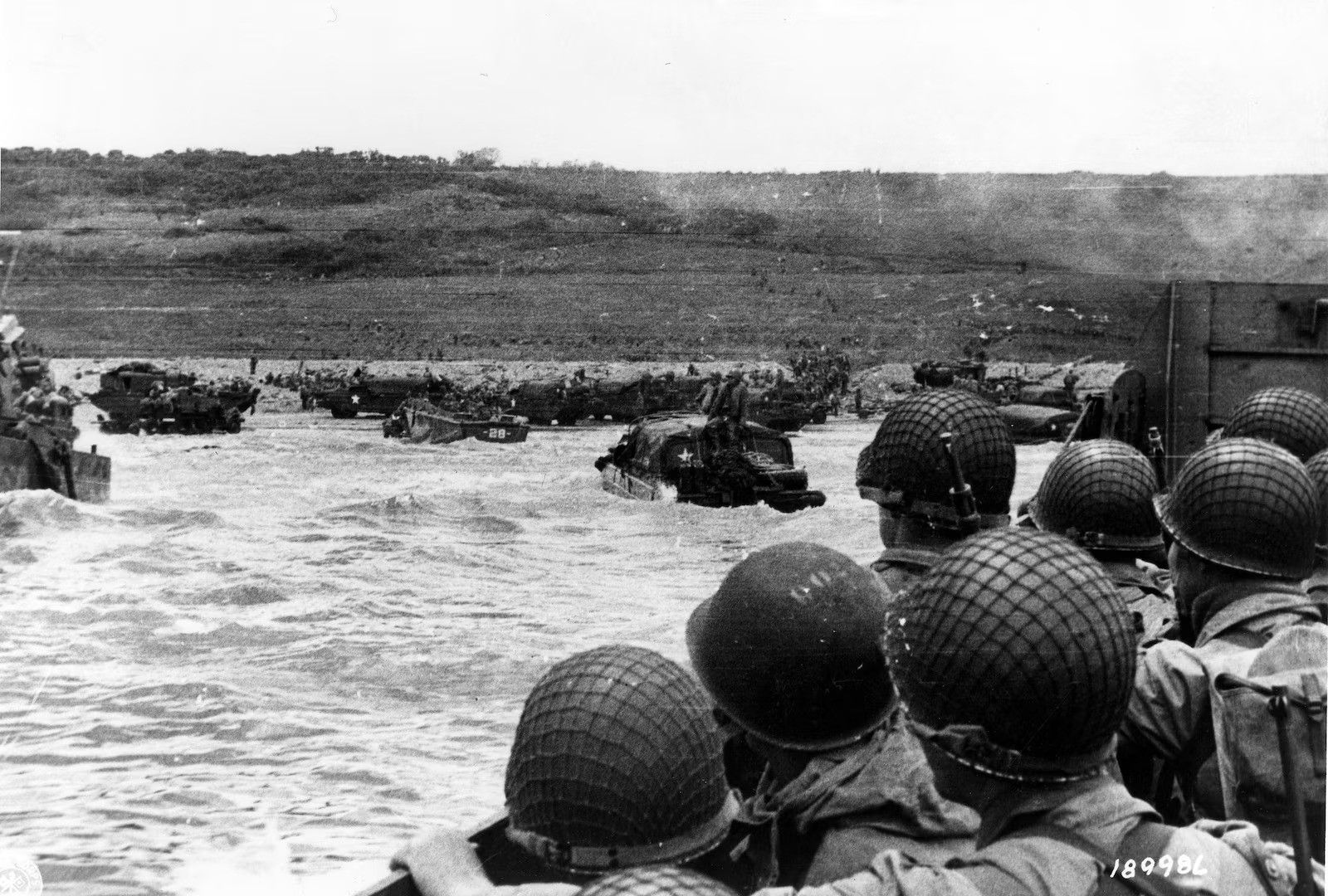Juno Beach, located on the coast of Normandy, France, was one of five landing sites during the D-Day invasion on June 6, 1944. Allied forces chose this 50-mile stretch of French coastline for the largest amphibious assault in military history. The beach was assigned to Canadian forces, who faced the challenging task of establishing a crucial foothold in Nazi-occupied Europe.
The 3rd Canadian Infantry Division and 2nd Armoured Brigade stormed Juno Beach with remarkable determination, successfully establishing a bridgehead despite fierce German resistance. Their advance was significant enough to link with British forces from Gold Beach on the first day—one of only two beach connections achieved during the initial landing. This Canadian achievement represented an important step in the Allied push to liberate Western Europe.
The battle for Juno Beach demonstrates the crucial role Canadian forces played in the larger D-Day operation. Though often overshadowed by American and British contributions, the Canadian assault on Juno Beach was vital to the success of the Normandy landings, which ultimately helped turn the tide of the Second World War against Nazi Germany.
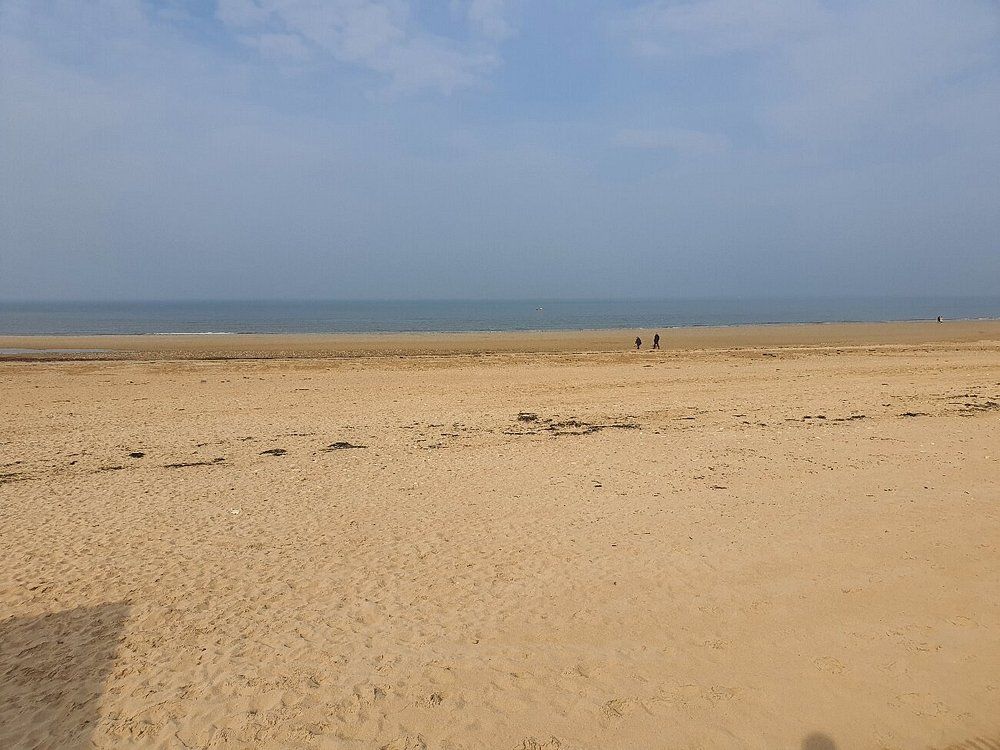
Historical Context
Juno Beach was a critical component of the larger D-Day invasion of Normandy on June 6, 1944. This massive Allied operation marked a turning point in World War II as forces established a foothold in Nazi-occupied Western Europe.
Strategic Importance of Normandy
Normandy’s coastline provided several advantages for the Allied invasion. Its beaches were within range of fighter aircraft from Britain, offering crucial air support during the landings. The region’s location would allow Allied forces to establish a secure base for pushing inland toward Paris and eventually Germany.
The Germans knew an invasion was coming but were uncertain where it would occur. Hitler’s forces had fortified much of the Atlantic Wall, including Normandy’s beaches, with obstacles, mines, and gun emplacements as part of their “Fortress Europe” defense strategy.
Controlling Normandy would give the Allies a gateway into occupied France. It would also force Germany to fight on multiple fronts, dividing their military resources between the Eastern Front with the Soviets and the new Western Front.
Plan for the Allied Landing
The D-Day plan, codenamed Operation Overlord, divided the Normandy coastline into five beach sectors: Utah and Omaha (American), Gold and Sword (British), and Juno (Canadian). Each landing force had specific objectives to accomplish.
The 3rd Canadian Infantry Division and 2nd Canadian Armoured Brigade were assigned to capture Juno Beach. Their objectives included establishing a bridgehead and pushing inland to capture key crossroads and villages.
Allied planners selected June 6, 1944, after careful consideration of tides, moonlight, and weather conditions. The invasion began with overnight paratrooper drops, followed by massive naval bombardment of German defenses.
Before the landings, Allied forces conducted extensive deception operations to convince Germans the main attack would come at Pas-de-Calais rather than Normandy. This crucial misdirection helped reduce German defensive strength at the actual landing sites.
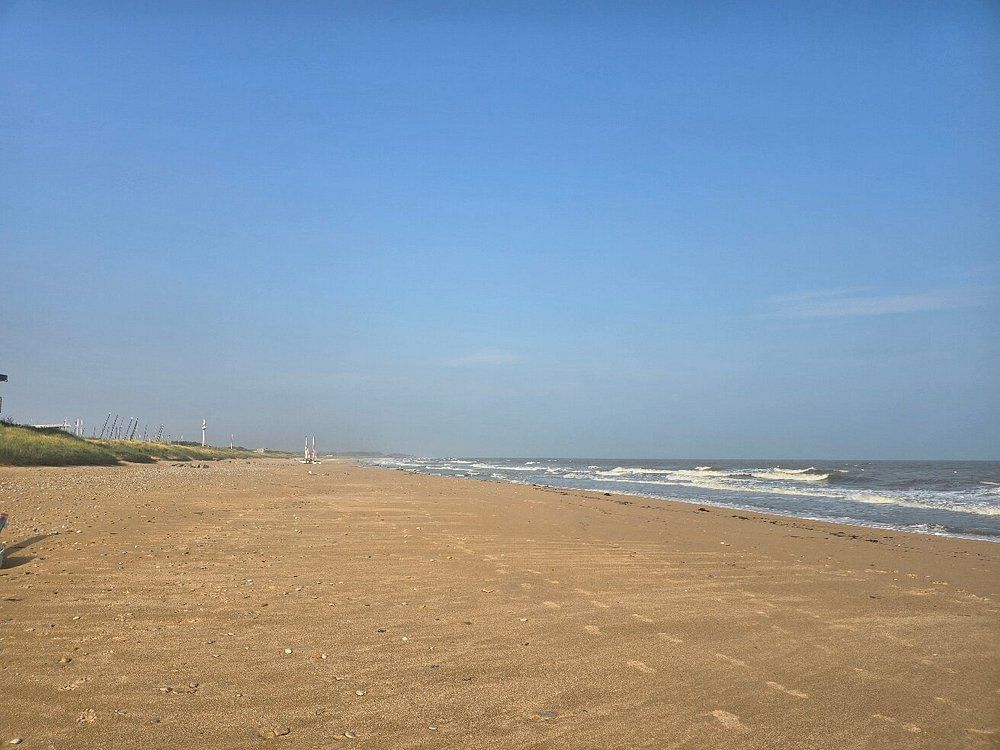
The Forces Involved
Juno Beach witnessed a major confrontation between well-prepared Allied forces and German defenders during the D-Day landings on June 6, 1944. The battle featured Canadian troops leading the charge with British support against determined German resistance.
Allied Forces
The Allied assault on Juno Beach was primarily assigned to the British Second Army under Lieutenant General Miles Dempsey. This force included both Canadian and British troops, with Canadians taking the leading role in the actual landing operations.
British naval and air forces provided crucial support for the landing operations. The Royal Navy supplied bombardment ships that shelled German positions before and during the landings.
Allied planners designated Juno as one of five landing beaches in the overall Normandy invasion plan. It was positioned between Sword Beach (British) and Gold Beach (British), creating a continuous Allied front across the Normandy coastline.
The combined Allied force aimed to push inland quickly to connect with troops from neighboring beaches and establish a firm foothold in Nazi-occupied France.
3rd Canadian Infantry Division
The 3rd Canadian Infantry Division, led by Major-General Rod Keller, formed the spearhead of the Juno Beach assault. This 18,500-strong force was supported by the 2nd Canadian Armoured Brigade, providing essential tank support for the infantry.
The division was organized into three infantry brigades:
- 7th Canadian Infantry Brigade
- 8th Canadian Infantry Brigade
- 9th Canadian Infantry Brigade
These troops faced intense challenges, including rough seas that delayed landings and submerged beach obstacles. Many landing craft hit mines or obstacles, causing casualties before soldiers even reached the shore.
Despite these difficulties, the Canadian forces showed remarkable determination. By the end of D-Day, Canadian troops had penetrated further inland than almost any other Allied force, advancing nearly 10 kilometers from the shoreline in some areas.
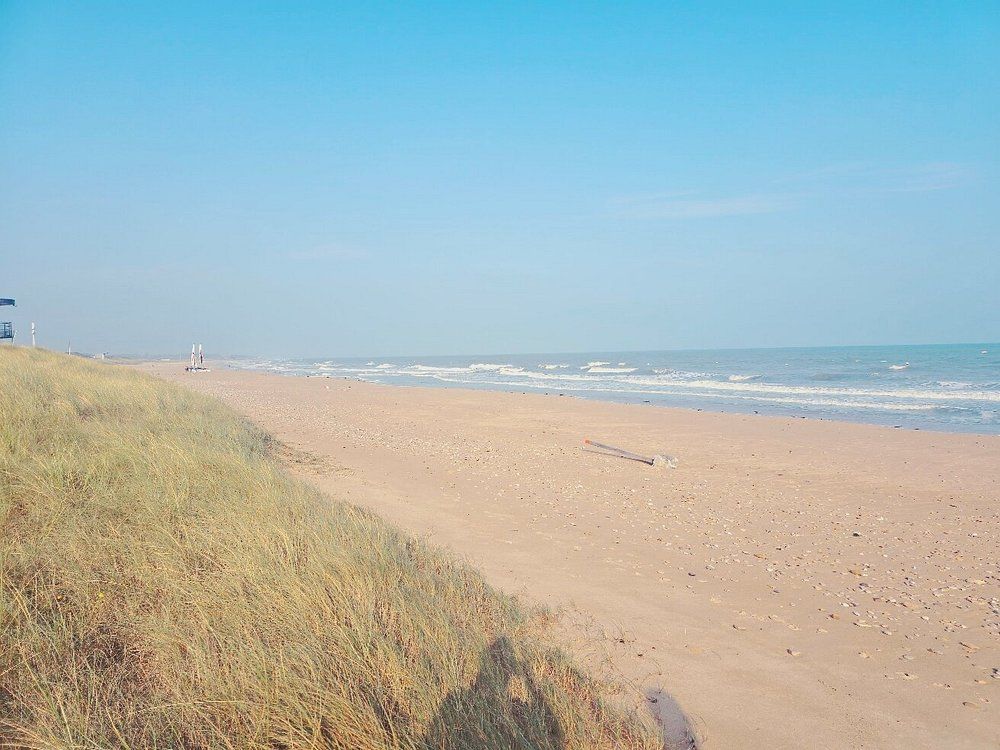
German Defenders
Juno Beach was defended primarily by elements of the 736th Regiment of the 716th German Infantry Division. This division deployed 29 companies equipped with approximately 500 machine guns positioned in concrete emplacements along the shoreline.
The German defensive strategy included:
- Concrete bunkers with overlapping fields of fire
- Beach obstacles and mines to damage landing craft
- Artillery positions to shell approaching forces
- Anti-tank weapons to counter armored vehicles
German commanders had anticipated an Allied landing and fortified the beaches as part of the Atlantic Wall defensive system ordered by Hitler. However, the 716th Division consisted largely of static troops, including many non-German conscripts considered lower quality than elite German units.
After initial resistance, German tank forces from the 12th SS Panzer Division counter-attacked into the gap between Sword and Juno Beaches, with some units reaching the coast. This threatened the Allied flank but couldn’t dislodge the established beachhead.
The Landing at Juno Beach
Canadian forces faced fierce resistance when they landed at Juno Beach on June 6, 1944, as part of the larger D-Day invasion of Normandy. Despite heavy casualties and obstacles, they pushed inland farther than most Allied forces that day.
Initial Assault
The 3rd Canadian Infantry Division and 2nd Armoured Brigade began their assault on Juno Beach at dawn on June 6, 1944. Landing craft transported approximately 14,000 Canadian troops toward the heavily defended shoreline between Courseulles-sur-Mer and Saint-Aubin-sur-Mer.
The timing of the landing proved challenging. High tide covered many beach obstacles, making them difficult to see but allowing landing craft to get closer to shore. However, rough seas caused delays and disorganization.
Many landing craft struck mines or obstacles, resulting in immediate casualties. Some tanks sank before reaching shore, while others successfully deployed using specialized equipment to navigate through deep water.
Despite these difficulties, Canadian troops established a foothold on the beach within the first hour. They faced intense machine gun fire from German pillboxes but pushed forward with determination.
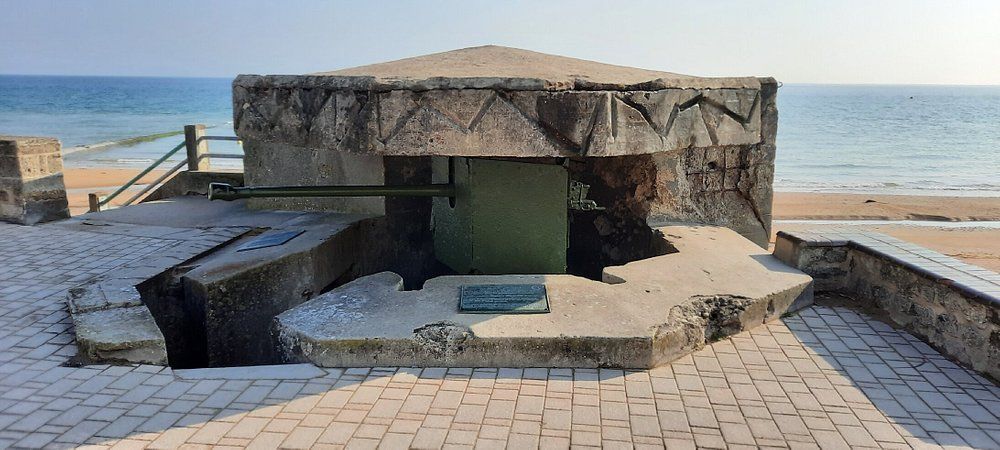
Beach Obstacles and Fortifications
The Germans had transformed Juno Beach into a formidable defensive position. Steel obstacles known as “Czech hedgehogs” and wooden stakes tipped with mines were placed at various tide levels to damage landing craft.
Concrete bunkers housed machine guns with interlocking fields of fire. These fortifications were connected by trenches allowing defenders to move under cover. Minefields covered much of the beach and approaches.
The Atlantic Wall defenses included:
- Concrete pillboxes with artillery pieces
- Anti-tank walls and ditches
- Barbed wire entanglements
- Underwater obstacles with mines
Canadian engineers worked frantically to clear paths through these defenses. Using specialized tanks, they created gaps in obstacles and neutralized strongpoints. Despite heavy losses, they opened several exit routes from the beach.
Supporting Operations
Naval bombardment began hours before the landing to soften German defenses. Warships fired thousands of shells at known enemy positions along Juno Beach, though many fortifications survived the barrage.
Fighter aircraft provided crucial air support, attacking German positions and preventing enemy reinforcements from reaching the beach. Specialized landing craft equipped with rockets added firepower during the approach.
The Royal Canadian Navy played a vital role by guiding landing craft to their designated sectors. Mine-clearing vessels worked to create safe channels to the beach.
By the end of D-Day, the Canadians had landed 3,200 vehicles and advanced nearly 7 miles inland—farther than any other Allied force. Their objective of linking with British forces at Sword Beach was partially achieved, though a complete connection would take additional days of fighting.
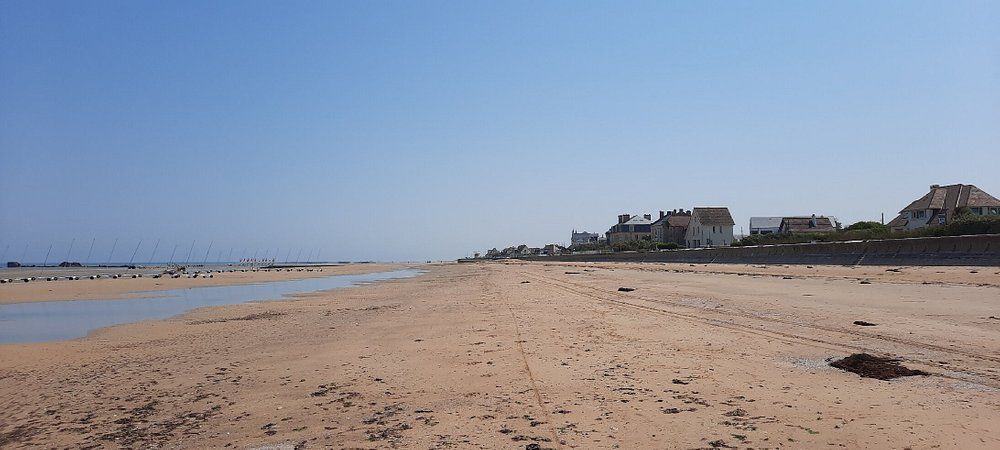
Key Locations
Juno Beach contained several strategic locations that were critical to the success of the Allied invasion. These areas represented both initial landing zones and important inland objectives that Canadian forces needed to secure quickly.
Courseulles-sur-Mer
Courseulles-sur-Mer marked one of the main landing points on Juno Beach during the D-Day invasion. This small fishing town was heavily defended as part of Hitler’s Atlantic Wall defenses.
Canadian troops from the Royal Winnipeg Rifles and Regina Rifle Regiment landed here on June 6, 1944. They faced strong German resistance from concrete bunkers and machine gun positions.
Today, Courseulles-sur-Mer hosts the Juno Beach Centre, the only Canadian museum on the D-Day beaches. This center commemorates the 14,000 Canadian troops who landed on Juno Beach.
The harbor at Courseulles was a key objective because it would allow supplies to be brought in once captured. Despite heavy casualties, Canadian forces secured the town within hours of landing.
Caen-Bayeux Road
The Caen-Bayeux Road represented a critical inland objective for Canadian forces after establishing beachheads. This major transportation route connected two of Normandy’s largest towns.
Securing this road was essential for Allied movement of troops, tanks, and supplies. German defenders recognized its importance and positioned reserves to counter any Allied advance toward it.
Canadian troops pushed inland toward this road on D-Day but faced increasing resistance. While some units nearly reached the road on the first day, complete control took longer than planned.
The road’s strategic value cannot be overstated. It provided access to Caen, a major objective that would eventually take weeks to capture due to fierce German defense.
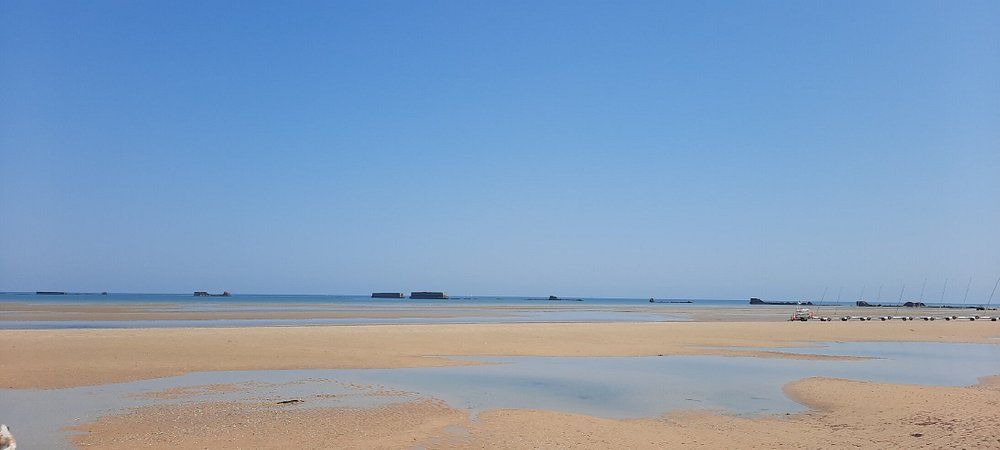
Carpiquet Airfield
Carpiquet Airfield, located just west of Caen, was one of the most heavily defended positions facing Canadian forces advancing from Juno Beach. This military airfield had substantial concrete hangars and bunkers.
Originally an objective for D-Day itself, the strong German presence made this impossible. The airfield was defended by elements of the 12th SS Panzer Division, comprised of fanatical young soldiers.
Canadian troops from the 3rd Canadian Infantry Division finally captured Carpiquet on July 4, 1944, nearly a month after the initial landings. The battle was especially fierce, with heavy casualties on both sides.
Taking the airfield was crucial because it eliminated a base for German aircraft and provided the Allies with a forward air position. Its concrete runways could support fighter planes needed for ground support operations.
Operations Beyond the Beach
After the initial landings, Canadian forces faced the critical challenge of moving inland from Juno Beach to secure their day-one objectives. This phase proved just as difficult as the beach landings themselves due to strong German resistance, logistical challenges, and timing issues.
Advancement Inland
The 3rd Canadian Infantry Division pushed forward from Juno Beach with determination despite heavy casualties from the morning assault. Soldiers advanced through minefields, trenches, and fortified villages while facing sniper fire and machine gun nests.
By early afternoon, Canadian troops had penetrated further inland than any other Allied force on D-Day. They moved through the coastal villages of Courseulles-sur-Mer, Bernières-sur-Mer, and Saint-Aubin-sur-Mer, clearing them of German defenders.
The Queen’s Own Rifles and the North Shore Regiment made significant progress through tough opposition. Canadian tanks from the 2nd Armoured Brigade provided crucial support, helping infantry overcome strongpoints that might have otherwise stalled the advance.
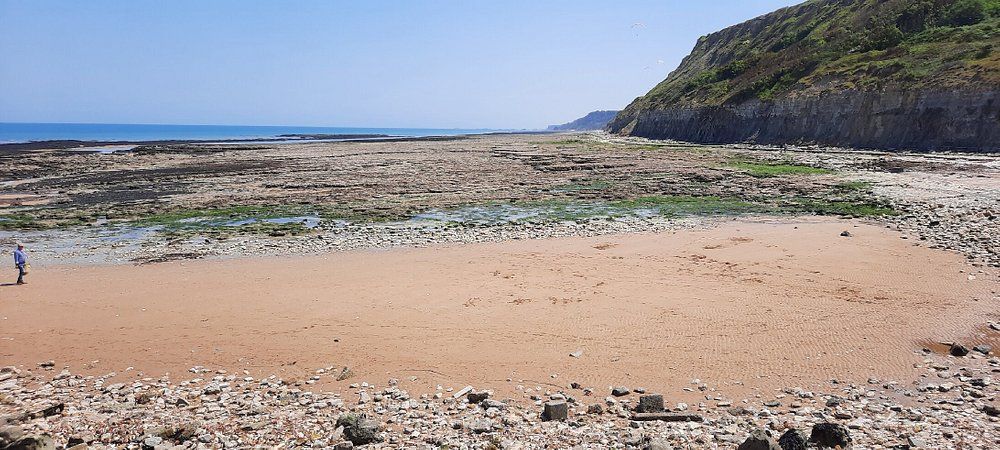
Traffic Jam and Delays
A massive traffic jam developed on Juno Beach as the day progressed, significantly slowing the Canadian advance. Damaged landing craft, knocked-out vehicles, and beach obstacles created bottlenecks at key exit points.
The congestion prevented reinforcements, supplies, and heavy equipment from moving inland on schedule. This delay particularly affected artillery units needed to support infantry against German counterattacks.
The traffic problems on Juno mirrored similar issues on Gold Beach and Sword Beach. Communication difficulties added to the confusion, with field commanders struggling to coordinate movements across the crowded terrain.
Securing Objectives
The Canadians successfully captured several key villages and positions by the end of D-Day, though they fell short of their ambitious final objective—reaching the Caen-Bayeux highway. The 7th Canadian Infantry Brigade secured Creully and Fontaine-Henry, establishing defensive positions against potential counterattacks.
The Regina Rifles and Royal Winnipeg Rifles pushed toward Bretteville-l’Orgueilleuse and Putot-en-Bessin, engaging in fierce fighting with German infantry units. By nightfall, Canadian forces had established a fragile but significant foothold approximately 10 kilometers inland.
Contact was made with British forces from Gold Beach on the right flank, creating a unified Allied front. However, the gap between Canadian forces and British troops from Sword Beach remained open, creating a vulnerable section in the Allied line.
Aftermath and Casualties
The Allied invasion at Juno Beach came with a heavy price in human lives. Canadian forces suffered significant losses while achieving their objectives, with precise casualty figures varying across different historical accounts.
Immediate Aftermath
After securing their beachhead, Canadian troops pushed inland farther than any other Allied force on D-Day. They captured several key villages including Bernières-sur-Mer, Saint-Aubin-sur-Mer, and Courseulles-sur-Mer. By nightfall on June 6, 1944, Canadian forces had advanced nearly 10 kilometers inland.
Despite this success, the beach remained dangerous. Scattered German resistance continued, and the shoreline was littered with destroyed vehicles and equipment. Engineers worked quickly to clear mines and obstacles to allow reinforcements to land safely.
The Canadian achievements at Juno Beach were remarkable considering the strong German defenses they faced. Within 24 hours, most of their Day 1 objectives had been met, creating a crucial foothold for the Allied invasion.
Casualty Reports
The human cost at Juno Beach was severe. According to multiple sources, the 3rd Canadian Division suffered approximately 340 killed, 574 wounded, and 47 captured during the initial assault, totaling 961 casualties. This represents a ratio of about 1 casualty for every 18 Canadian troops who landed.
The overall Allied casualties at Juno Beach were estimated at around 1,240, including army personnel. Naval and air force casualties are less well-documented in available records.
German losses at Juno Beach were reportedly heavy but precise figures remain unknown. The defenders faced overwhelming firepower from naval bombardment, air attacks, and the advancing Canadian infantry and armor.
These sacrifices helped secure a critical section of the Normandy coastline, contributing significantly to the success of the larger D-Day operation that would eventually lead to the liberation of Western Europe.
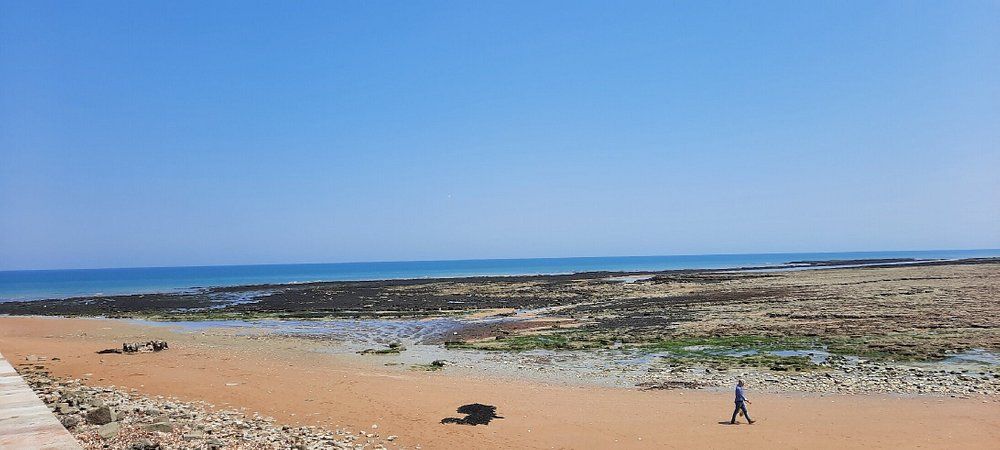
Memorials and Legacy
Canada’s contributions on Juno Beach continue to be honored through memorials and educational initiatives. These serve as powerful reminders of the sacrifice and courage shown during the D-Day landings of June 6, 1944.
Juno Beach Centre
The Juno Beach Centre stands as the primary memorial honoring Canadian contributions during the Normandy landings. Opened in 2003, this museum pays tribute to the 45,000 Canadians who lost their lives during World War II, including 5,500 killed during the Battle of Normandy and 381 on D-Day alone.
Located directly on the historic landing site, the Centre serves as both a museum and a cultural space. Its modern design houses exhibitions that tell the stories of Canadian soldiers through artifacts, photographs, and personal accounts.
Local residents have also taken it upon themselves to preserve lesser-known stories of Canadian soldiers. These grassroots efforts complement the Centre’s official mission.
Educational Impact
The Juno Beach legacy continues through robust educational programs designed for visitors of all ages. School groups from Canada and around the world regularly visit the site to learn about this crucial chapter in World War II history.
Digital resources developed by the Centre reach classrooms globally, ensuring the stories of sacrifice and courage endure for future generations. These materials include virtual tours, lesson plans, and firsthand testimonies from veterans.
Memorial events, particularly on the anniversary of D-Day, serve as powerful educational moments. The tragic execution of 27 Canadian soldiers, commemorated by a special memorial near the beach, highlights the human cost of the operation.
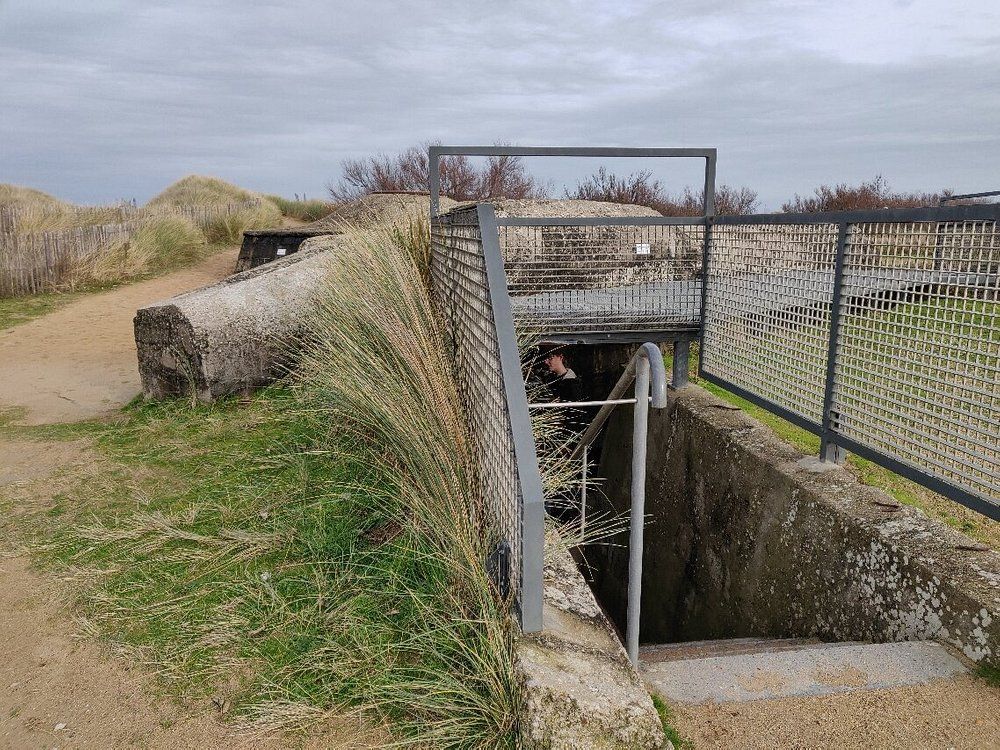
Multimedia and Resources
Juno Beach’s historical significance has been preserved through various digital and interactive materials. These resources help people today understand the events of June 6, 1944, through photographs, maps, and interactive experiences.
Photographic Records
The Juno Beach Centre maintains extensive photographic archives documenting the Canadian landing operations. These images capture soldiers boarding landing craft, navigating obstacles on the beach, and moving inland through Norman villages.
Black and white photographs show the harsh realities faced by troops as they established beachheads under enemy fire. Aerial reconnaissance photos reveal the beach defenses and give perspective on the scale of the operation.
The Centre’s media assets include rare footage of Canadian forces during the D-Day landing. Researchers and educators can contact the Centre directly at [email protected] to access these valuable historical records.
Interactive Exhibits
Modern technology brings the Second World War experience to life through interactive exhibits about Juno Beach. Virtual tours allow visitors to navigate the beach in 360-degree panoramic views, exploring key locations from the comfort of home.
The Juno Beach Centre’s Multimedia Zone features:
- Interactive maps of the landing areas
- Animated battle sequences
- Educational games about D-Day operations
- Audio clips from veterans’ testimonies
- Video reconstructions of the invasion
These resources help students and history enthusiasts understand the 50-mile Normandy invasion coastline, including how Juno Beach connected with Gold and Sword beaches in the overall Allied strategy.
Interactive exhibits also cover the Canadian home front from 1939-1945, providing context for the war effort beyond the battlefield.
More Reading:
Read about each of the different landing zones here:
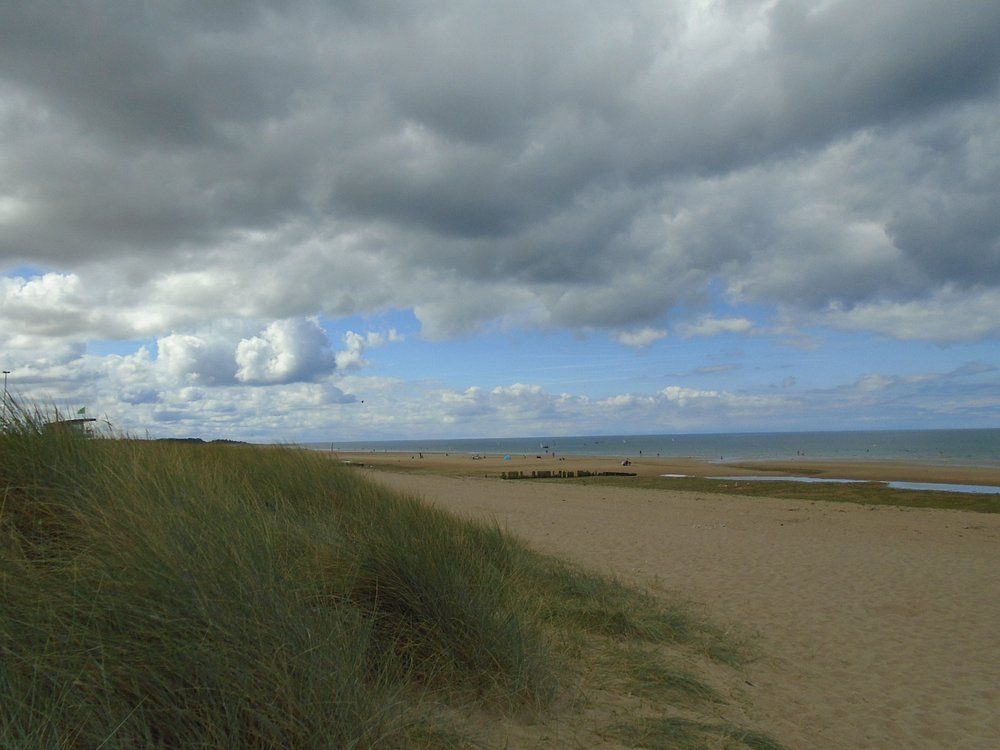
Juno Beach Travel Guide
Juno Beach, nestled along the picturesque coast of Normandy, offers visitors a powerful blend of history and natural beauty. This stretch of coastline not only serves as a peaceful vacation spot away from crowded tourist destinations but also stands as a solemn reminder of Canada’s crucial role during the D-Day landings of World War II. The Juno Beach Centre, the only Canadian museum on the D-Day beaches, provides an authentic and immersive experience where you can walk the same sands where Canadian troops fought for freedom in 1944.
When planning your visit to this historic site, you’ll find much more than just the museum. The surrounding area features numerous memorials, battle sites, and tours that extend beyond the beach itself. You can explore the tank battles fought by Canadian infantry and paratroopers, especially the significant Falaise action near Caen that helped secure Allied victory.
Visitor Guide
Juno Beach offers a moving historical experience for you as you explore this D-Day landing site. The beach stretches from Courseulles-sur-Mer to Bernières-sur-Mer in Normandy, France.
The Juno Beach Centre is the main attraction, located in Courseulles-sur-Mer. This museum honors Canadian troops who fought during the Invasion of Normandy on June 6, 1944.
A typical visit to the Centre takes about 90 minutes. Young Canadian guides lead tours that bring Operation Overlord to life.
Opening Hours:
- Open daily (specific seasonal hours may vary)
- Best visited in morning or late afternoon to avoid crowds
Juno Park Tours include walks along the beach and viewings of preserved German bunkers. These guided tours provide context about the Battle of Normandy.
You can easily access Juno Beach via the Maple Leaf Route, which connects various D-Day sites in the area.
Nearby D-Day Sites:
- Gold Beach (British landing site)
- Various war memorials
- Preserved military equipment
Courseulles-sur-Mer offers a peaceful seaside atmosphere alongside its historical significance. Unlike the crowded Mediterranean coast, this area of Normandy provides a more reflective vacation experience.
When planning your visit, allow at least half a day to fully experience Juno Beach and its museum. Comfortable walking shoes are recommended as you’ll be exploring beaches and outdoor sites.
The area combines somber World War II history with the natural beauty of Normandy’s coastline, creating a memorable and meaningful travel experience.
Nearby Accommodations
Finding a place to stay near Juno Beach is easy with many options available. Hotels start at around $81 per night, giving you affordable choices for your World War II historical visit.
Bed and breakfasts are plentiful along the Normandy coast. These charming accommodations offer a more personal experience than hotels. If you’re cycling through the region, B&Bs make ideal stopping points!
For those wanting to stay close to the Juno Beach Centre in Courseulles-sur-Mer, you’ll find over 230 accommodation options. These range from budget-friendly hotels to more luxurious stays.
When planning your lunch break during your Juno Beach exploration, many hotels are conveniently located near restaurants. You can easily return to your accommodation to rest between morning and afternoon visits to historical sites.
Travelocity offers hotel deals starting at $72 near Juno Beach. Booking in advance for your 2025 trip is recommended, especially during summer months when tourism peaks.
Most hotels in the area provide full amenities and have received positive reviews from travelers. When choosing your accommodation, consider proximity to the beach and historical sites to maximize your time exploring this significant WWII landmark.
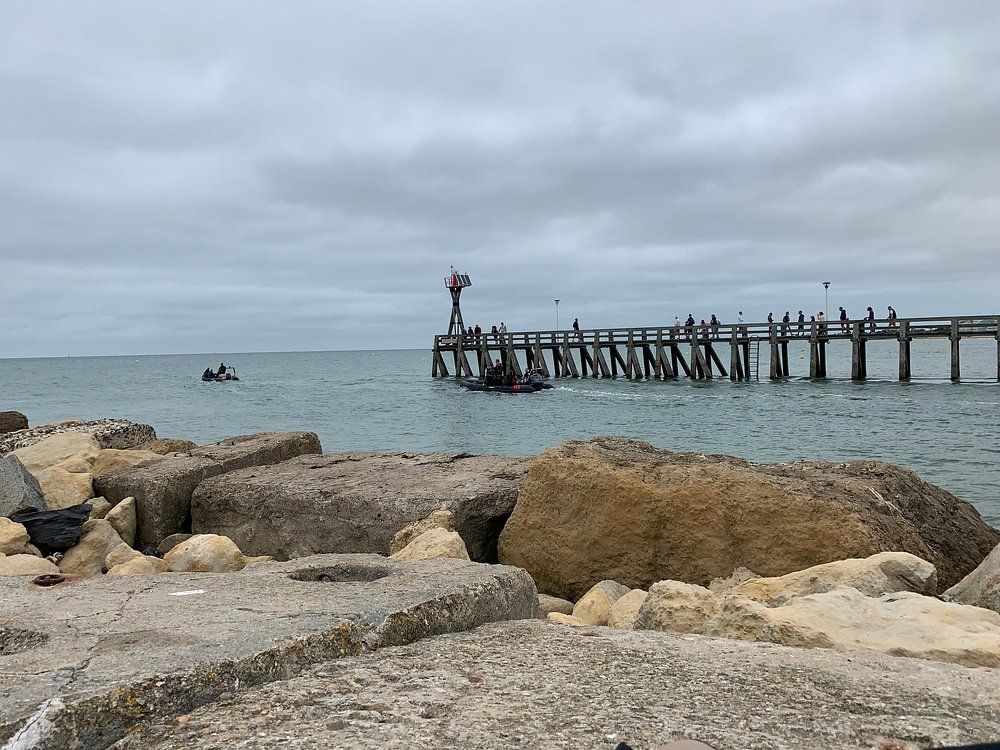
Nearby Things to Do
When visiting Juno Beach, you’ll find plenty of fascinating attractions within easy reach. The area is rich with history and beautiful scenery.
The D-Day Museum in Arromanches is a must-visit site. Here you can learn about the incredible Mulberry Harbor, an artificial port that was crucial for Allied supplies.
Arromanches also offers amazing 3D scale models that help you visualize the D-Day landings. The displays make complex military operations easier to understand.
Visit the Grand Bunker near Ouistreham to see an authentic German defensive position. It’s been restored to look exactly as it did in 1944.
Bayeux is just a short drive away. You’ll love its famous medieval tapestry and charming old town with cobblestone streets and cafés.
The American Cemetery at Colleville-sur-Mer provides a moving tribute to fallen soldiers. Its peaceful setting overlooking Omaha Beach is unforgettable.
History buffs should head to the Airborne Museum in Sainte-Mère-Église to learn about paratroopers’ role in D-Day.
La Cambe German Cemetery offers a thoughtful counterpoint to Allied memorials. It’s a somber reminder of losses on all sides.
The Cotentin Peninsula has beautiful coastal scenery and historic sites. Exploring by bike is a great option—many tour companies offer guided bike tours of the landing beaches.

